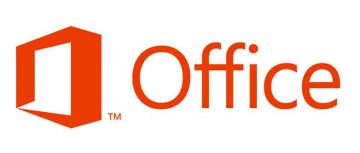Here's All You Need to Know About Adaptive Multi-Factor Authentication

Everyone wants to protect their network and their data from a malicious breach. One of the best ways to protect sensitive information is to lock it behind a password. Unfortunately, passwords can be easily cracked or leaked, and security experts have been working towards a more secure authentication method.
Most of the reputable business entities these days employ multi-factor authentication to secure individual accounts. We have already discussed this type of authentication in great detail, but in this entry, we would like to refresh your memory, and then introduce you to the adaptive multi-factor authentication, which is the next step in data security.
What is multi-factor authentication?
To reiterate what multi-factor authentication is, it is technically defined as a type of authentication that requires users to apply something they have or know to access their accounts. Normally, that would be a password, right? A password is arguably the most common type of authentication, and we all use multiple passwords every single day. Or perhaps, you are recycling your password across all of your accounts? THAT is something you most definitely shouldn't do because it makes your account vulnerable to a potential hacker attack. Also, users' inability to come up with strong passwords is one of the main reasons we now have multi-factor authentication in the first place.
Reliable password managers and multi-factor authentication are something that should mitigate password vulnerabilities. First, password managers can help users generate strong and unique passwords. Although it is hard to memorize strong passwords, password managers are also there to store them and fill them in automatically whenever users access their accounts. So, the problem of recycled and weak passwords should more or less be taken care of. But is that enough?
Most definitely not. Securing your account with a single password gives it only one layer of protection. This is where multi-factor authentication comes in. Multi-factor authentication works with individual tokens that users have. They might be tangible or intangible tokens. The most common example of a multi-factor authentication token would be a one-time password. This password can be a code that you receive via a text message, and you have to enter that password within a limited time frame. Also, multi-factor authentication could rely on tangible tokens, such as hardware drives, when you have to plug them into the device before you sign in to your account.
The point is that there are lots of ways to authenticate your identity via multi-factor authentication, and this type of authentication is a lot harder to hack. However, it has its limitations as well, because it usually works based under the premise one-size-fits-all. What we mean is that the same authentication method is usually applied to all users, although not all accounts are similar. Even within the same system, some are more important, some are less risky. It is especially relevant when we talk about business networks. If one user has more rights and can access important parts of the system, perhaps their authentication method should be more sophisticated than that of someone from a lower tier?
What is adaptive multi-factor authentication?
Depending on the risk and on the individual use of certain accounts, it would be for the best to apply adaptive multi-factor authentication rather than the regular one. The difference between the two is definitely in the name: Adaptive multi-factor authentication can be tailored and customized based on what kind of security the vendor wants to impose. Maybe someone thinks that one-time passwords that arrive via text messages are too vulnerable to phishing attacks and social engineering. Maybe regular multi-factor authentication isn't flexible enough. So here we have adaptive multi-factor authentication that can counter that.
The main point of adaptive multi-factor authentication is that it employs an AI engine that can study and learn user behavior over time. For example, the system can study user's login patterns, and it can learn that a certain user logs in from certain locations most of the time. If suddenly the user tries to access the account from an unexpected location, adaptive multi-factor authentication system may issue more hurdles for the user before they can access the account. Just to see whether it is not an attempt to break into the system. In other words, if the user's behavior deviates from the norm, this authentication system should automatically increase the challenge to prove the user's identity.
To put it simply, the regular multi-factor authentication gives an additional layer of security, and this layer is applied in the same manner to all users who attempt to access the system. Adaptive multi-factor authentication, on the other hand, can modify the type of security token from a user to a user based on a number of factors that vary. This type of authentication can take into account user's behavior, and even match the user's profile with the list of behavioral patterns it has logged before.
For businesses, it is definitely a good choice if they want to increase their network security. Adaptive multi-factor authentication can offer flexible solutions, and they tend to be cost-effective. While a handful of businesses might be reluctant to move towards this type of authentication, we just have to remember that the biggest part of data breaches occur due to poor passwords. What's more, we don't find out about most of the breaches until it is too late, and our data is already floating somewhere in the dark market. Not to mention that companies could be held responsible for the security breaches if it is found that they haven't done everything to protect their client data.
Thus, if there is a new method to protect your network and the personal or business information stored in that network, you most definitely need to employ that method. Adaptive multi-factor authentication just happens to be that kind of tool.
There are multiple adaptive multi-factor authentication solutions out there that you can choose from. Please select the one that caters the best to your needs. While it is true that no network is impenetrable, it is still important to do everything in your power to limit the potential of a malicious hack.








